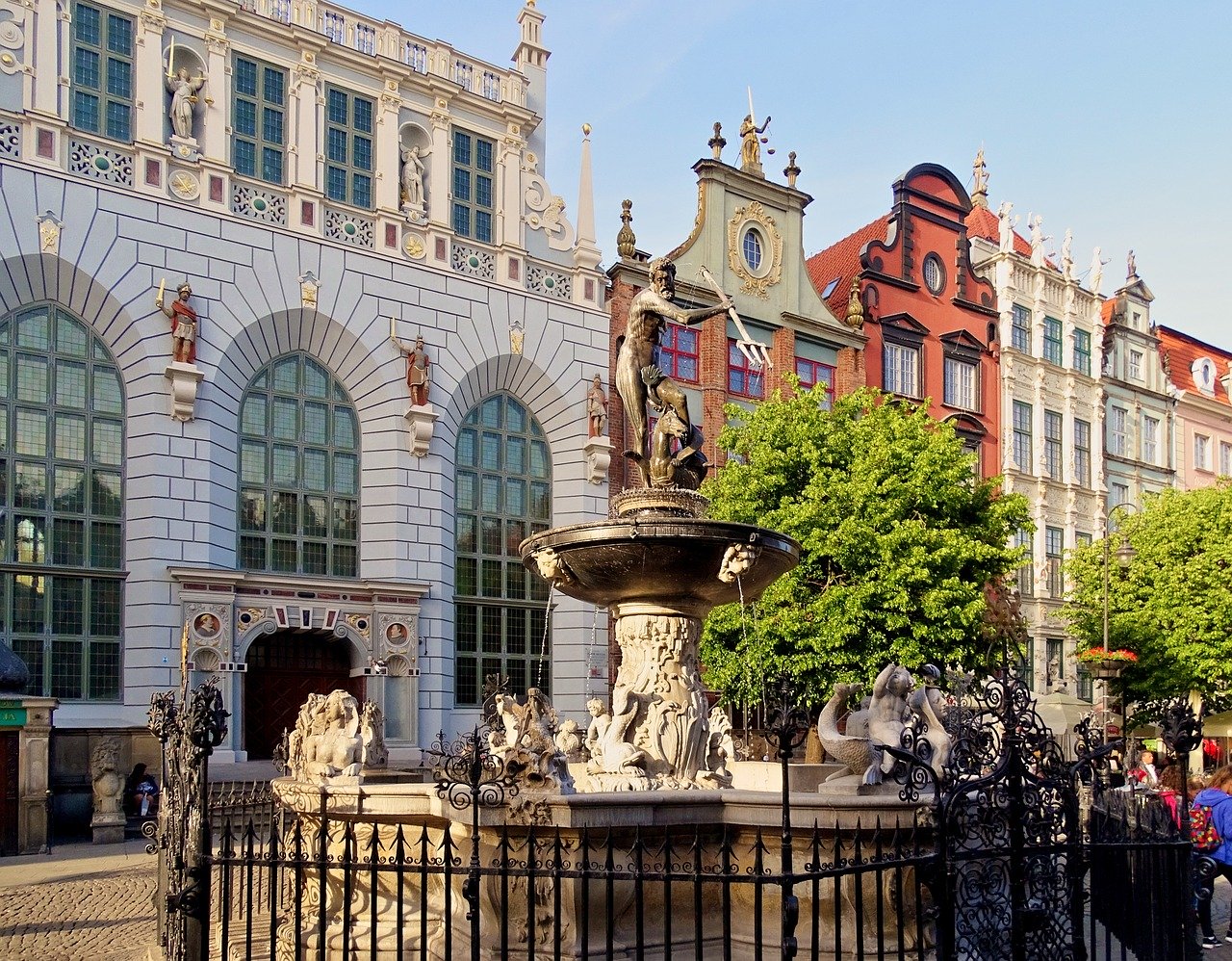The attractions of Gdansk in Poland
- The Old Town
- Jurav at Motława river
- Amber museum
- Oliwski Park
- The Church of St. Mary
- The City History Museum
- The Artus Yard
The attractions of Gdansk in Poland that a guide can advise to you.
Gdańsk is a thousand-year-old Baltic castle city, home to Schopenhauer, Grass, Walesa and Fahrenheit. It is also the scene of ten centuries of turbulent history, a rich cultural treasure trove and a place with its own wonderful atmosphere.
It is probably the most beautiful Polish city and definitely one of the oldest. Majestic and at the same time very comfortable, Gdańsk belongs to those rare places that instantly capture your heart. Almost every building in this city has its own history. Picturesque, friendly, ancient and fascinating Gdańsk is a destination where every person in love with old Europe should come.
Tourists come here for the unique architecture and sights of the Old Town. And, of course, to enjoy the seaside. Although the cold waters of the Baltic are not always suitable for swimming, the salty air and the noise of the surf give Gdańsk a special charm.
The medieval architecture of the Old Town, with its narrow cobblestone streets, museums and cozy cafes, can hardly leave a traveler indifferent. Among its attractions are the Royal Route and the Church of the Virgin Mary. There are many splendid churches in Gdańsk, but the Basilica of St. Mary's Church is especially splendid. In the city you can find many museums, such as the Archaeological Museum, Malbork Castle or the museum ships docked in Gdynia.
In and around Gdańsk there are many parks and greenery. Local government attaches great importance to preservation of architectural heritage and environmental issues, so the city full of old buildings, is literally buried in parks and squares among the green hills and lakes. Trigorodski and Oliwski Park are the favorite places for walks of local residents. In addition, there are many private beaches near the city, where you can sunbathe and swim during the short warm days of the Baltic summer.
Speaking about geography, Gdańsk is located in the northern part of Poland, on the southern shore of the Baltic Sea. Today Gdańsk has a population of about 500,000 people. The agglomeration, which also includes the coastal cities of Sopot and Gdynia, is home to up to 2 million people. The agglomeration is called Trójmiasto. Archaeologists say that people settled on this site in the fifth century, and Gdańsk itself is founded probably in the tenth century, when the first mention of the city was found.
Gdańsk is one of the cultural centers of Poland. The museums here are home to many works of art, which you can see during your trip.
Some must-see places.
The Royal Route is the most famous route for tourists in Gdańsk.
From the Golden Gate begins the path of Polish monarchs. It leads to Targ Square along Dluga Street, and allows you to enjoy the views of traditional facades of Gdańsk buildings. Along the road there is a large number of houses of great interest to fans of architecture. The Golden Gate itself was built during the Renaissance period. It depicts the virtues of Concord, Reason, Justice and Piety.
Walking in Old Town you will surely come to the Town Hall, built in the 13th century. It was originally built in the Gothic style, but after a fire in the 16th century, the façade acquired Renaissance elements. One of the main decorations of the building is the 80-meter dome topped with a statue of Sigismund the Second in gilt. Today the Town Hall houses the City History Museum.
The Church of St. Mary is one of the largest in Europe (5 PLN to visit and the same if you want to go upstairs; during mass the entrance for tourists is closed).
Neptune Fountain, dates back to the 17th century, it is considered to be a symbol of the city. If you are fascinated by Medieval architecture, you will like the Artus Yard. The original feature of Artus Yard is the 10-meter-high 16th-century furnace decorated with beautiful depictions of monarchs and bas-reliefs. A lot of valuable paintings and sculptures are preserved here.
Jurav at Motława river (Crane) is an incredible 15th century structure that was both a city gate and a harbor crane. It is the oldest harbor crane in Europe.
Amber Museum (on the approach to Dlugi Targ Street). The city is called the amber capital of the world, so when describing the attractions of Gdańsk, you cannot ignore this museum. It is not only interesting, but also stunningly beautiful.

